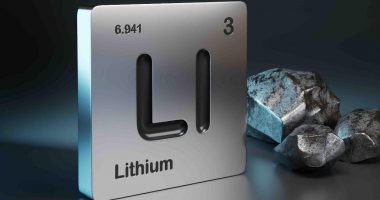- Lefroy (LEX) has completed a six-hole reverse circulation (RC) program at its Burns Project in the WA Goldfields, as well as preparations for a 14-hole diamond drilling program
- Drilling is focused on a newly discovered hematite-pyrite-chalcopyrite-magnetite altered porphyry, termed the Eastern Porphyry
- Each of the six-holes intersected the Eastern Porphyry in the interpreted position. All ended in variably-altered porphyry
- In particular, one drill-hole intersected an alteration zone that is visually similar to the 20-metre high-grade interval in LEFR260
- Multiple flecks of visible gold were also noted in the lower interval of the same hole
- Additionally, a 14-hole drill program of approximately 1500 metres, is expected to start mid-April, to evaluate the Eastern Porphyry
- Shares are in the grey at 69 cents each
Lefroy (LEX) has completed a six-hole reverse circulation (RC) program at its Burns Project in the WA Goldfields as well as preparations for a 14-hole diamond drilling program.
Last week, the company announced it had restarted drilling at the prospect with the aim of extending and advancing the geological understanding of a new porphyry hosted mineral system.
The six-holes were drilled on five consecutive, 40 metre-spaced east–west sections along strike of the discovery section that hosts the illustrious LEFR260, which delivered an ‘outstanding’ intercept in February.
LEFR260 is located within a large interpreted felsic intrusion, termed the Burns Intrusion. The high-grade gold and copper interval is hosted within a newly discovered hematite-pyrite-chalcopyrite-magnetite altered porphyry, termed the Eastern Porphyry.
Each of the six holes intersected the Eastern Porphyry in the interpreted position. The company said this provides confidence in, and support for the geological model.
All holes ended in variably-altered porphyry, the eastern limit of which
is yet to be determined and which extends out beneath Lake Randall.
Drillhole LEFR283, located 40 metres north of LEFR260, intersected two zones of magnetite sulphide altered porphyry separated by magnetite altered basalt.
Intriguingly, the lower interval, from 120 metres to end of hole, intersected an alteration zone visually similar to the 20-metre high-grade interval in LEFR260.
Multiple flecks of visible gold were also noted in the lower interval of LEFR283.
The assay results from the program are expected in mid-April.
Looking ahead, 14 pre-collared holes are ready for diamond drill tails which consist of previous and new RC drill holes.
The 14-hole drill program of approximately 1500 metres, will evaluate the Eastern Porphyry over a 200 metre strike length on 40 metre spaced drill sections.
The first planned hole will twin and extend past the high-grade interval in LEFR260. The second, will aim to test 50 metres vertically beneath the mineralisation in LEFR260.
The program is due to start mid-April, depending on rig availability.
Shares are in the grey at 69 cents each at 10:04 am AEDT.







